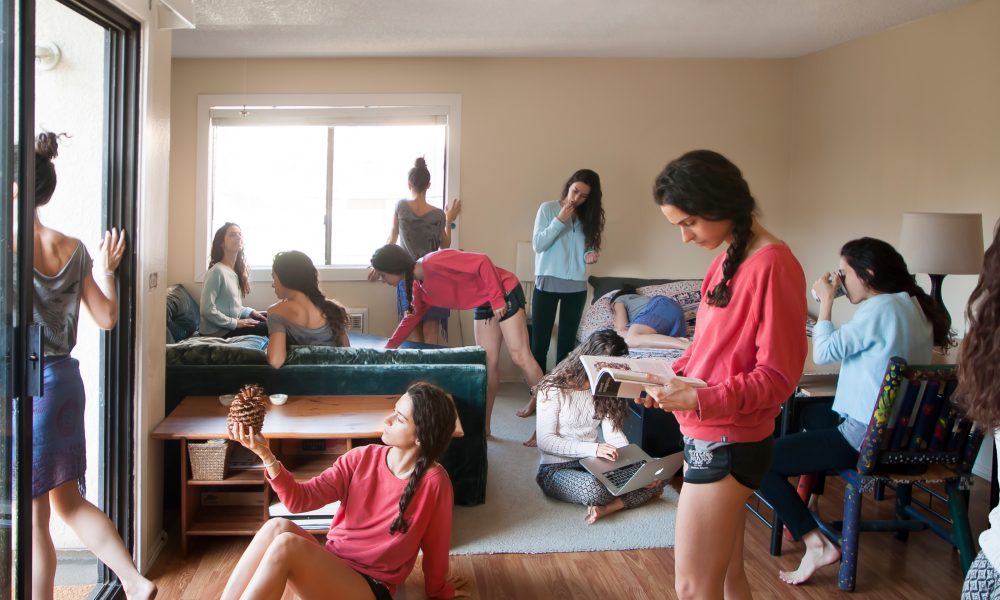

Today we’d like to introduce you to Lavinia Lascaris.
Hi Lavinia, thanks for sharing your story with us. To start, maybe you can tell our readers some of your backstory.
I’ve always been creative though it took some time to channel my creativity in productive ways. I was decent at drawing and painting and really liked getting my hands dirty doing projects and crafts. At eighteen, I left Greece and went to school in London for Art, Design, and Media where my focus was in sculpture and photography. I spent a few years working in the arts, living between London, Paris, southeast India, and Athens. I then shifted my focus to dance, which I always had a passion for (and some training). I spent two years in Barcelona studying Cuban dances before moving back to Athens and setting up a small dance studio for teaching and training with my dance partner, George. Together we taught workshops and performed at international dance festivals around Europe.
After six years of dancing, I was ready to go back to school, this time for graphic design. I moved to Los Angeles and began my MFA in graphic design at ArtCenter College of Design. This was where I discovered a profound interest in academic research and how that leads to developing concepts that are then graphically and typographically articulated. I am interested in the educational role of graphic design and typography; less so in its use for selling things. I now work at Hoffmitz Milken Center for Typography (HMCT) at ArtCenter designing educational projects about graphic design, typography, and language that are presented in our gallery spaces and/or in book form.
Alright, so let’s dig a little deeper into the story – has it been an easy path overall and if not, what were the challenges you’ve had to overcome?
No, it has not been smooth. Moving from place to place and changing career paths has its challenges. For a while, I felt that I was unable to commit to a profession—or a city—and that I wasn’t very good at anything. It felt like starting over every time, making an unfamiliar city your home, meeting new friends, making connections… One thing I did right though was that I never stopped creating and experiencing new things. Eventually, I realized that I wasn’t starting over; all my experiences were forming part of a chain that inform my current work. I learned to embrace the diversity and trusted that it would lead somewhere.
Alright, so let’s switch gears a bit and talk business. What should we know about your work?
I think what defines my work is strong research and conceptual thinking. I believe that robust process yields results that are socially and culturally relevant while reaching people on an emotional level. It is within this process—reading, interviewing, assessing data, field research, hands-on experimenting with materials, and prototyping—that I discover opportunities and solutions to visually articulate my projects. At my current position as Exhibition & Graphic Designer at HMCT, my goal with every project is to use the results of my research to offer educational and engaging experiences by making choices that consider the exhibition space and resonate with the subject.
One project that I’m particularly excited by began in 2019 (and still ongoing) when I was looking into how systems of language become systems of thinking. A year later, I had the opportunity to co-design an educational program based on this research. The program addresses the relationship between technology and language and how linguistically inventive online communities as well as emergent technologies such as machine learning are affecting the way we communicate.
In terms of your work and the industry, what are some of the changes you are expecting to see over the next five to ten years?
The role and scope of graphic design is shifting as new tools and technologies develop that are changing the world. Designers (like most professions) are called to adapt and understand how these changes are happening while identifying the nature of relationships between people and experiences within complex systems. People are no longer passive consumers of information and graphic designers no longer design just logos and websites. There is a growing need for interdisciplinary design teams to create concepts that address social, cultural, economic, and psychological matters while constantly questioning the moral implications of their practice.
Contact Info:
- Email: [email protected]
- Website: https://lavinialascaris.com/
- Instagram: https://www.instagram.com/lavinialascaris/








Image Credits:
Juan Posada, Simon Johnston














